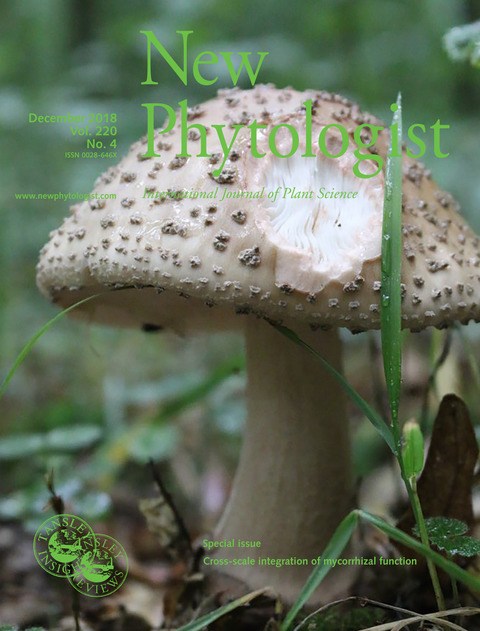Plant Ecology Laboratory
Research in our lab focuses on diversity patterns in biological communities, and on the interactions underlying these patterns. The main questions we address are: how do communities vary along natural gradients and gradients of human impact? What are the major assembly rules shaping communities; and are they attributable to biotic interactions or environmental heterogeneity? What are the roles of different biotic interactions - including competition, facilitation, herbivory and symbiosis - in structuring communities? Read more
News archive - November
Special issue of New Phytologist brings 5 new papers from our team!
November 2018
 With the last issue of New Phytologist our team published five scientific papers! This is a special issue stemming from International Conference on Mycorrhizas (ICOM9) held last year in Prague. The papers range from case studies to methodological tests, conceptual discussion and commentary. We show how arbuscular mycorrhizal fungi live on grasslands when you abandon their management, or when you (over)fertilise them, explore and discuss optimal ways to see invisible – how to detect AM fungal species and what would that species be, and place in context new knowledge about how mycorrhizal symbionts mattered when plants “moved back” to postglacial new habitats. We also thank our collaborators from China, US, Canada and Finland!
With the last issue of New Phytologist our team published five scientific papers! This is a special issue stemming from International Conference on Mycorrhizas (ICOM9) held last year in Prague. The papers range from case studies to methodological tests, conceptual discussion and commentary. We show how arbuscular mycorrhizal fungi live on grasslands when you abandon their management, or when you (over)fertilise them, explore and discuss optimal ways to see invisible – how to detect AM fungal species and what would that species be, and place in context new knowledge about how mycorrhizal symbionts mattered when plants “moved back” to postglacial new habitats. We also thank our collaborators from China, US, Canada and Finland!
*Bruns TD, Corradi N, Redecker D, Taylor JW, Öpik M. 2018. Glomeromycotina: what is a species and why should we care? New Phytologist 220: 963–967.
*Jiang, S, Liu, Y, Luo, J, Qin, M, Johnson, N, Öpik, M, Vasar, M, Chai, Y, Zhou, X, Mao, L, et al. 2018. Dynamics of arbuscular mycorrhizal fungal community structure and functioning along a nitrogen enrichment gradient in an alpine meadow ecosystem. New Phytologist 220: 1222–1235.
*Lekberg Y, Vasar M, Bullington LS, Sepp S-K, Antunes PM, Bunn R, Larkin BG, Öpik M. 2018. More bang for the buck? Can arbuscular mycorrhizal fungal communities be characterized adequately alongside other fungi using general fungal primers? New Phytologist 220: 971–976.
*Neuenkamp L, Moora M, Öpik M, Davison J, Gerz M, Männistö M, Jairus T, Vasar M, Zobel M. 2018. The role of plant mycorrhizal type and status in modulating the relationship between plant and arbuscular mycorrhizal fungal communities. New Phytologist 220: 952–953.
*Zobel M. 2018. Eltonian niche width determines range expansion success in ectomycorrhizal conifers. New Phytologist 220: 947–949.
2022: march, august
2021: february, may, august, september, october
2020: february, august, september, december
2019: january, february, march, april, june, july, september, november
2018: january, february, march, april, may, june, july, october, november, december
2017: january, february, march, april, may, june, july, august, september, october, november, december
2016: january, february, march, april, may, july, august, october, november, december
2015: january, february, march, april, may, july, august, september, october, november
2014: january, february, may, july, august, september, november, december
2013: january, february, april, may, june, august, september, october, november, december
2012: january, february, march, april, may, june, august, september, october, november, december
2011: may, june, september, october, november

